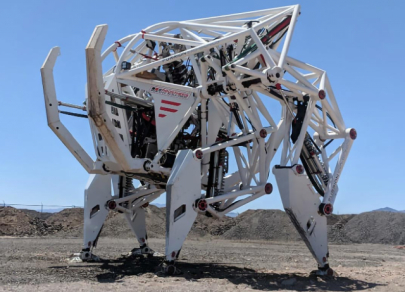FX.co ★ Iron Man is not fiction: the eight best exoskeletons
Iron Man is not fiction: the eight best exoskeletons
A patent for the first mechanical exoskeleton, which helped to quickly and easily run and jump, lift weights (elastiped), was registered in the 1890s by Russian engineer Nikolai Ferdinandovich Yagn.
Exoskeletons have been developed for several decades and are now widely used in industry, medical and social rehabilitation departments, but they have not yet reached mass production for the army.
The military needs full-fledged and efficient armored exoskeletons with servo drives for long periods of movement over rough terrain. The level of technology does not allow so far providing them with compact and powerful batteries.
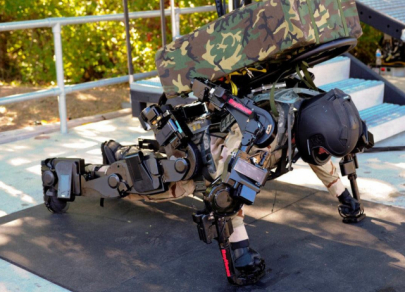
ExoAtlet, Russia
Russian exoskeletons designed for medicine, industry and the military are being developed by a number of scientific schools. The most famous exoskeleton «ExoAtlet» was assembled on the basis of the Research Institute of Mechanics of Moscow State University, the first robosuit of which was an exoskeleton for the Ministry of Emergency Situations.
The exoskeleton for the military weighs 12 kg and can carry 100 kg. Russian scientists are confident that an exoskeleton for explosives should go without recharging for 12 hours, so work in this direction continues.
The medical modification has a motorized frame that is worn like a suit and allows people confined to wheelchairs (with spinal cord injury, multiple sclerosis, stroke and cerebral palsy) to get back on their feet.
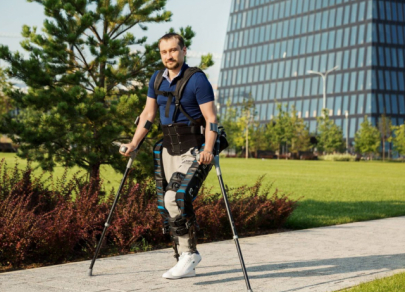
EO-01.02
This Russian military exoskeleton simplifies the tasks associated with forced marches over long distances and the movement of heavy loads, unloading the musculoskeletal system with the help of a special system of lever-hinge mechanisms. The suit is easy to put on and the load to drop for quick cover on the ground.
The exoskeleton allows the wearer to carry up to 70 kg and weighs only 7 kg due to being made of light metals and carbon fiber. In the future, it is planned to be made of armored aluminum.
The development and production of the exoskeleton is carried out by the GB Engineering company in partnership with TsNIITochMash (part of Rostec) located near Moscow. EO-01.02 was successfully tested in Syria during the demining of Palmyra and began to enter service with assault engineering and sapper units. In the future, it is planned to equip other departments with them, including the development of a civilian version. The integration of piezoelectric elements will allow the wearer to recharge the soldier's equipment while walking - a walkie-talkie, a commander's tablet, a navigator, etc.

Guardian XO
This exoskeleton of the American company Sarcos Robotics is capable of making its wearer 20 times stronger. It has a battery life of up to 8 hours and allows the wearer to lift up to 90kg (which feel like 4.5kg).
The suit functions are activated when a person goes inside the exoskeleton and is securely attached to it with the help of belts and a vest. Duplicating the actions of a person and repeating them in proportion, the robotic suit allows the wearer to walk, raise his arms, and squat. It takes no more than half a minute to disable or remove it.
The first Guardian XO models were released in January 2020 and are now leased to the US military and Delta Airlines for $100,000 per year.
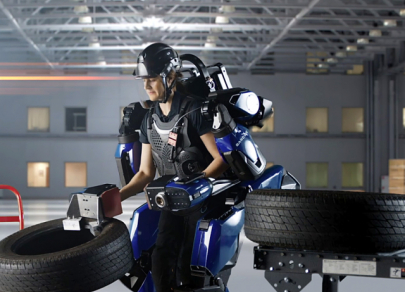
ONYX
The exoskeleton of the American defense corporation Lockheed Martin is attached to the legs with the help of a servo system, which, using a set of sensors, artificial intelligence and other technologies, adapts to the movements of its wearer and facilitates his movement over rough terrain.
The exoskeleton weighs 6.4 kg and runs on a 2.7 kg battery for up to 8 hours, 16 hours with a 5.4 kg battery.
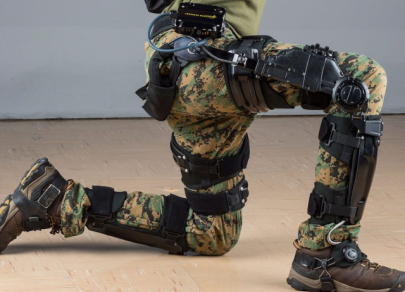
High Mobility Powered Exoskeleton
Testing of the prototype of this Japanese military exoskeleton was completed in 2020. It complies with ISO 13482, IPX5/7 waterproof rating and IPX 5 dustproof rating.
Powered by 4 batteries located on the back, this robotic suit lightens the load by 30 kg (a load of 50 kg feels like 20 kg), allows the wearer to move for 2 hours at a speed of 4 km / h, run at 13.5 km / h, which makes it one of the fastest exoskeletons in the world.
The High Mobility Powered Exoskeleton is equipped with a tablet to adjust the suit's control parameters, and a remote wireless interface makes it even more agile.
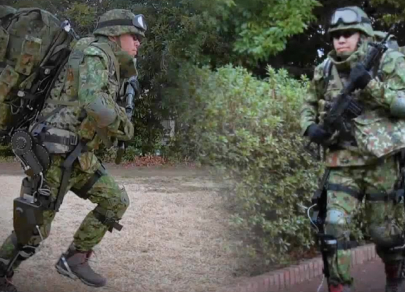
Cray X
The exoskeletons of the German Bionic System are designed using the technology of wireless power transmission over long distances. Sensors on the suit collect information and send it to engineers for processing. The Cray Visor augmented reality headset superimposes digital images on real objects to help the wearer complete work tasks (such as lifting loads up to 28 kg).
So, the latest (fifth) generation Cray X is equipped with a more powerful 40-volt battery. It is made of lightweight carbon fiber and weighs 7.4 kg, connects to IoT devices, automatically receiving updates from the cloud for Bionic IO software, specially developed by the company. After 8 hours of operation, the removable lithium battery can be quickly replaced without shutting down the suit and stopping the production process (on construction sites, open warehouses and car workshops).
The robotic suit has been tested in accordance with the IP54 standard for dust and water resistance. Cray X was showcased at CES 2022 (Las Vegas) in January.
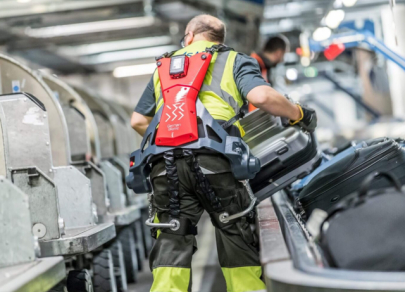
Daedulus
The flying exoskeleton Daedalus was invented by the British Richard Browning, who also created a jetpack. He valued his anti-gravity apparatus at $250,000, claiming that it could move a person at a speed of 321 km/h to a height of up to 1 km.
The founder of Gravity outfitted the 72kg Iron Man suit with a fuel tank on its back, as well as 6 jet engines on its arms and legs. As fuel, safe aviation kerosene was chosen. Information about its consumption is transmitted to the LCD display built into the glasses.
Daedulus was first tested in 2017 and, in addition to recreational and civilian applications, may be useful for the military. In order for the flight to go smoothly, the wearer must learn to change the position of his body.
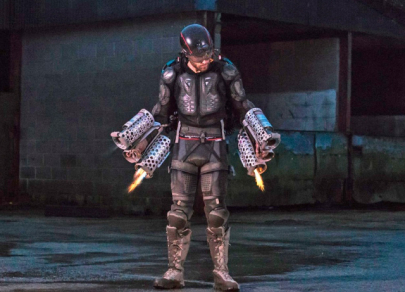
Prosthesis
It is the largest exoskeleton known in the world. The four-legged Prosthesis is listed in the Guinness Book of Records: it has a height of 3.96 meters, a length of 5.1 meters and a width of 5.51 meters, and weighs 1.6 tons. Despite its impressive size, it is capable of speeds up to 32 km per hour thanks to chrome steel, combining strength and lightness.
The exoskeleton is made in the form factor of tetrapods, controlled from the inside by a pilot who uses 2 electric motors that transmit a force of 16.2 kN each to the hydraulic system. Autonomous operation of the mechanical monster is provided by a custom-made 96-volt lithium-ion battery with a capacity of 36 kWh.
Canadian inventor and mechanical aficionado Jonathan Tippett, who lives in Vancouver, demonstrated the Prosthesis at CES 2018 and has been testing it for the aerospace and racing industries with his company Furrion for the fourth year.
